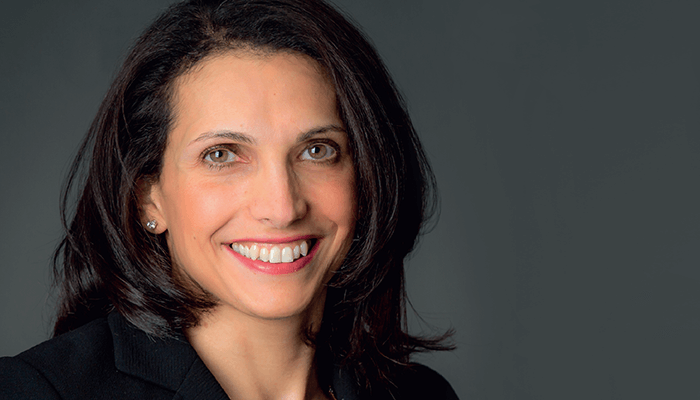
Noha Ekdawi is a pediatric ophthalmologist at the Wheaton Eye Clinic in Chicago. Ekdawi’s practice focuses on the medical and surgical treatment of various childhood disorders including strabismus, amblyopia, cataract, and glaucoma. Here, Ekdawi discusses the growing prevalence of myopia and the ways in which we can combat this visual impairment at an early age.
What inspired you to get into pediatric ophthalmology?
I loved pediatrics when I was in medical school. As I was doing my medical rotations, I would always ask to do pediatrics to gain more experience in the subspecialties. As I was doing pediatric ophthalmology, I was working with the famous Marilyn Miller – I didn’t realize quite how famous she was at the time! In any case, I walked into her clinic and said to myself, “This is it! This is what I want to do!” In short, I want to help kids. I realized that childhood is the time where you can make a huge difference to the course of someone’s life; it is a very positive speciality – you can fix things.
When did you begin to pay particular interest to myopia?
When I came back home from my residency and fellowship at the Mayo Clinic in Minnesota, I found out that all my friends, alongside myself and my father, were near-sighted. There were more nearsighted people in my home city than I was used to seeing at the clinic. When my child was born, research started to come out about how the rates of nearsightedness in Minnesota weren’t as bad as they were in Chicago. I wanted to identify the reason why and started researching myopia. Since then, I’ve started using low dose atropine to treat nearsightedness and, although I have been pleased with the results, I appreciate that it doesn’t work for everyone. It is now important to look for other alternatives.
What factors determine myopia?
I think there are many factors that determine myopia – genetics being one. If you live in an area where the gene pool is myopic, you are likely to develop myopia. I grew up in Chicago, and moved back here after my residencies – and I am now myopic; this is no coincidence. Outdoor time is really interesting too. You would think that people in the suburbs would be outside more – but the reality is that people watch a lot of TV and everyone has a Nintendo. It’s going to be interesting to see studies on the impact of screen time on myopic progression in the aftermath of COVID…
How have you tried to prevent the onset of myopia in your children?
Ultimately, it starts in the home. The choices we make as parents make a difference. My children didn’t get given technology when they were younger and I picked childcare options that instilled more outdoor time in their day. When we moved to a house that didn't have a park nearby, I had a swing set built in the backyard in the first week. Notably, being outdoors is not only good for preventing myopia, it has also been found to decrease ADHD symptoms and depression rates. If we push children to go outside more, even in inclement weather, their eyesight would be much better off.
What does the future of myopia management look like?
Some technologies, such as MiSight contact lenses and Ortho-k lenses, have been circulating for a long time – and I suspect they will continue to do so. New research into red light therapy looks particularly promising, but it requires a machine, making it more difficult to implement in everyday clinics. There is also a great deal of genetics research that needs to be explored. I believe some really high myopes have genetic disorders; I had an adopted child who was progressing no matter what I did. After conducting some genetic testing, I discovered that she had a gene that made it very likely that she would suffer from retinitis pigmentosa.
As for the actions I am going to take as a pediatric ophthalmologist, I want to try and educate my area of school nurses and principals about the importance of increasing outdoor time and outdoor education. I have personally seen the benefits; my kids should be myopic but little changes have changed their sight. Myopia is not the devil – but when you hit a minus six prescription and lower, problems like retinal tears and glaucoma start to occur.
It is clear that much more research is needed to combat the growing prevalence of myopia in children. Although health economic policies and school settings contribute to the factors that can determine myopia, ultimately the prevention of nearsightedness starts in the home. Small steps can lead to big differences.
What can be done to ensure that children in low income countries get access to the eye care they need?
One initiative striving to make a small difference comes from the aforementioned Marilyn Miller, who developed a program that allows ophthalmologists from outside of America to attend the American Academy of Pediatric Ophthalmology and Strabismus meetings (1). The program aims to provide ophthalmologists from around the world with information about current innovations and practices in ophthalmology that can be taken back to their home countries. I have recently joined the travel fund myself to help support this important initiative. Although it’s a step in the right direction, there is a great deal that needs to be done. Education is my only answer right now.
References
- American Association for Pediatric Ophthalmology and Strabismus, “Global Education and Training Awards.” Available at: https://bit.ly/3B9bk5t
